RSR-branded Porsches are meant for the race track, they say. But when you're offered the opportunity to instead drive it in the Alps, would you say no?
Words: Wilhelm Lutjeharms
Images: Charles Russell
If there is a manufacturer that has regularly built race cars which can, with a little effort, be road-registered, it’s Porsche. Let’s start at the beginning...
This 1973 Porsche 2.8 RSR has a rather illustrious racing history. It was built in February 1973 and was delivered to Max Moritz Racing a month later. During the following few years the car enjoyed a busy racing schedule…
In May it qualified 10th for the Targa Florio, but unfortunately it did not finish the event following a crash. In June it was time for the 24 Hours of Le Mans, but after 103 laps, it crashed early in the morning after nine hours of racing. Here’s an interesting fact: in full race trim, it tipped the scales at only 982 kg.
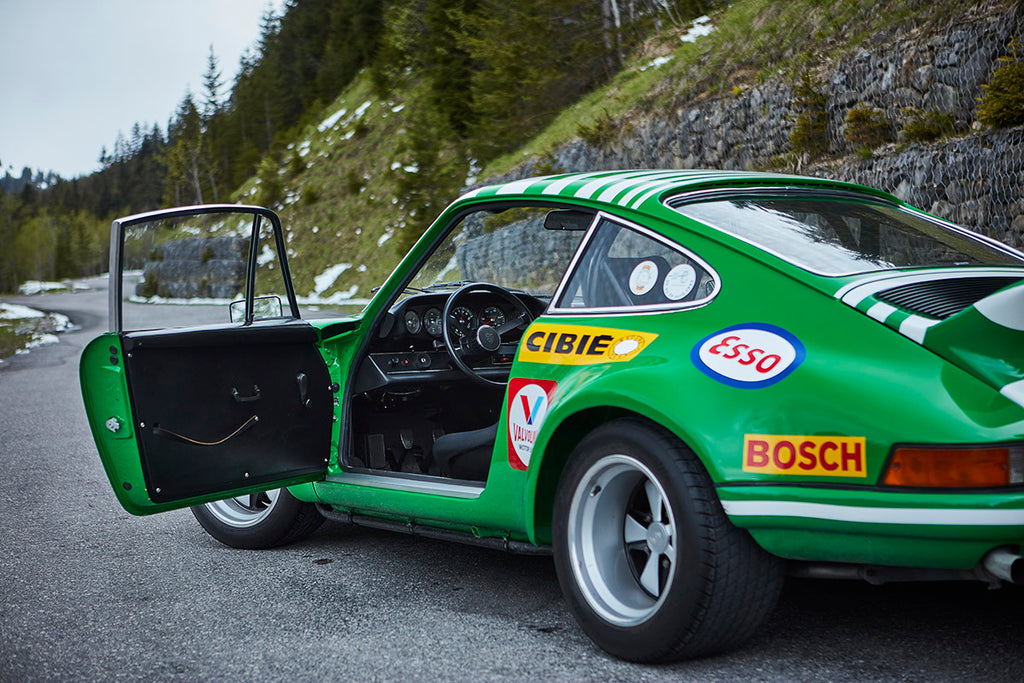
As was customary for the period, the car was upgraded to 3,0 RSR specification in 1974, while the 2.8-litre engine found its way to Australia to be installed in the Porsche EBS Prototype race car.
However, the car itself continued to be raced from 1974 to 1976. Shortly thereafter, the RSR received a specially-built 3.5-litre, flat-six engine. Then it was sold to a new owner in Sweden where it was raced extensively, and won the 1979 Swedish Championship.
In 1987 the car was bought by UK Porsche specialist Autofarm, but only a year later it was sold to racer Siggi Brunn, who decided to restore it back to its former glory. From 1993 to 1995 and 1997 to 1999, this RSR also took part in the prestigious Tour Auto. The current owner campaigned the car in those latter rallies, because he had owned the car since 1995.
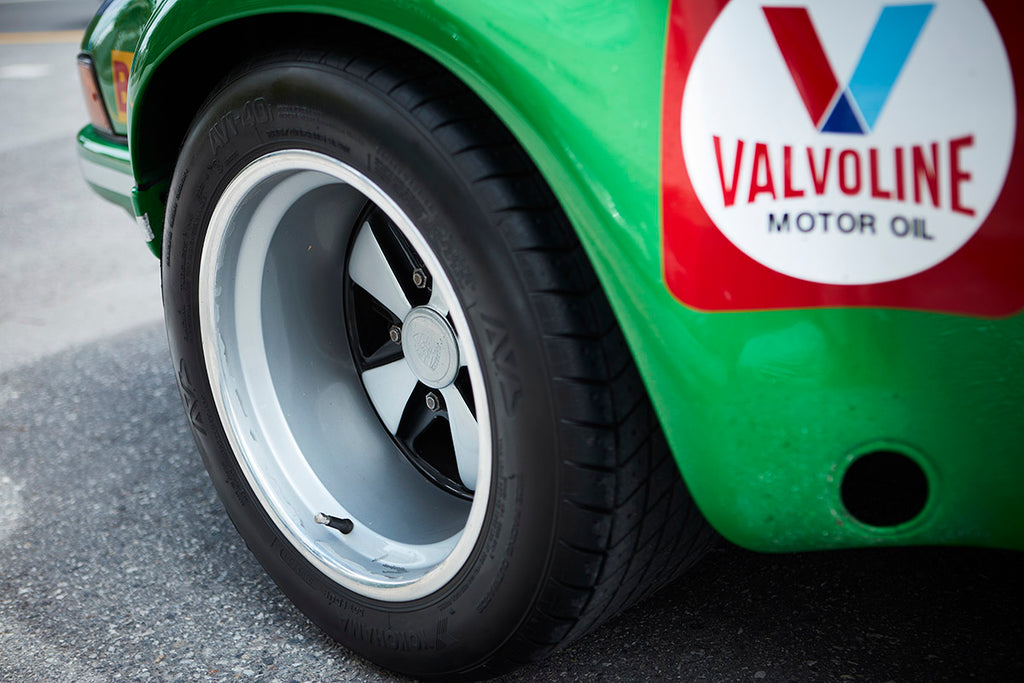
Since then the car has undergone another restoration (in 2009). This was more of a refurbishment than a full restoration, but when a friend of the owner began researching the car’s history, he found more than 50 pictures that detailed the car’s racing life.
It was subsequently decided to cover the car in the exact livery and stickers that it had when it participated in the 1973 Le Mans race. Incidentally, the EBS Prototype came up for sale, but its owner didn’t want to part with the engine. Fortunately the prototype’s new owner agreed to sell the engine, making it possible to have a matching-numbers ’73 RSR, which is rare.
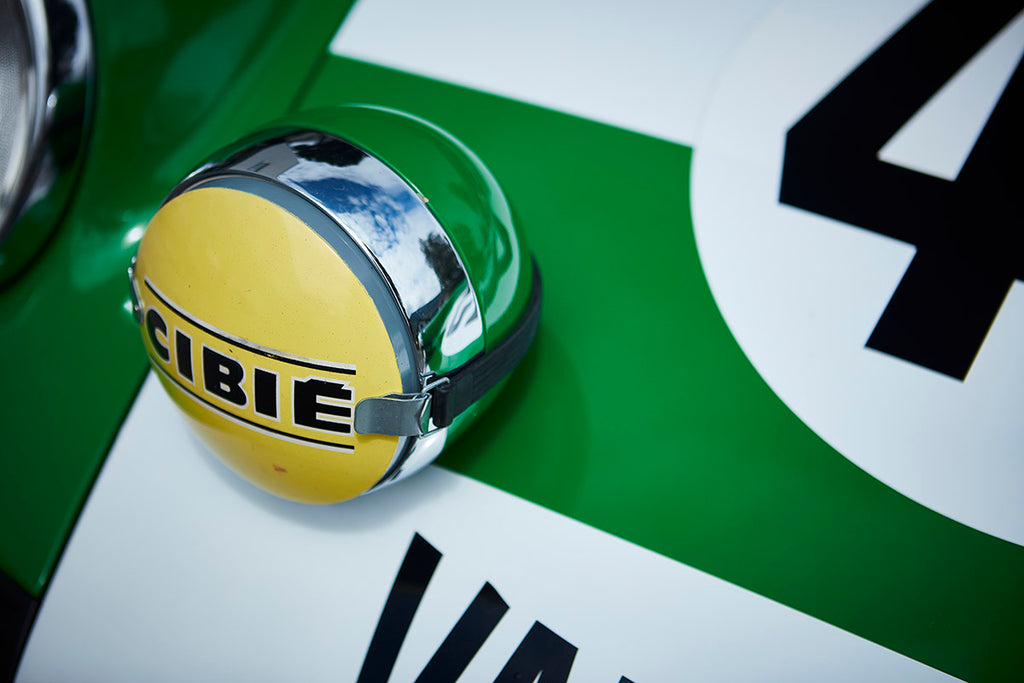
However, the owner decided to keep the 3.5-litre in the car though, partly because it was by now such an integral part of the car’s racing history. The characteristics of the engine was also similar to that of the original unit; he’s kept the precious 2.8-litre in storage, should he wish to reinstall it one day.
In Switzerland no other 2.8 RSR had been road registered in the Alpine country. What followed was a year of “jumping through several hoops”. First of all, the owner had to prove that the car was a genuine RSR and the volume of the otherwise characterful exhaust noise emitted by its exhaust system needed to be muffled.
To cut a long story short, they succeeded: the RSR was eventually road registered. This is not only appealing in the sense that the car can now be enjoyed on the seemingly endless number of picturesque and serpentine Alpine roads, but should the owner wish, he can drive the car to selected European events, participate, and drive it back home. You can’t do that in many RSRs!
Up close
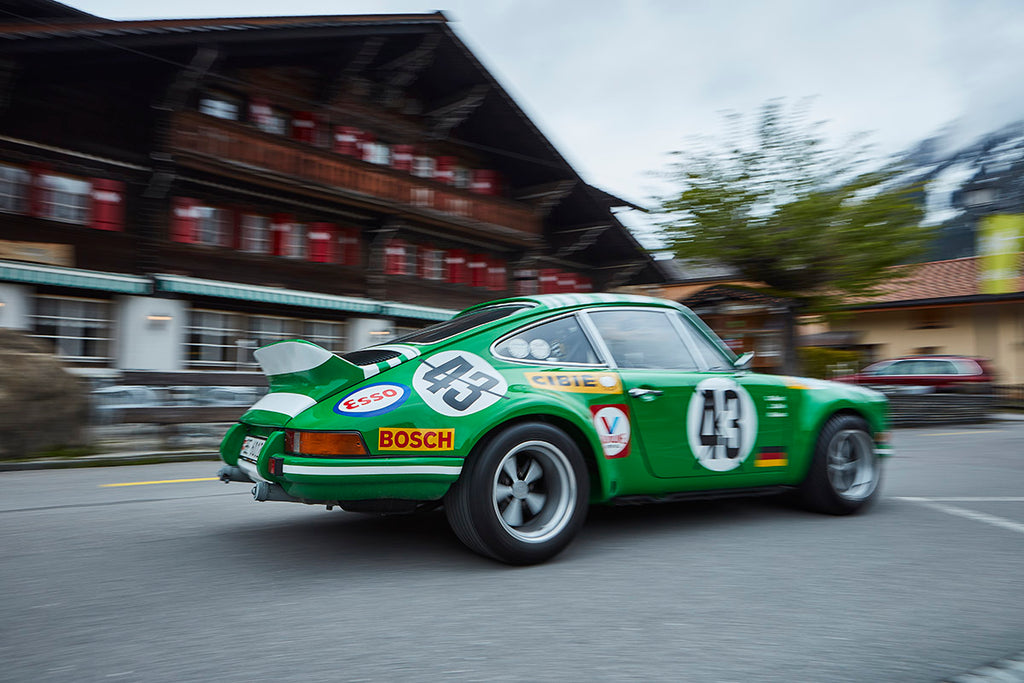
Walking around it, is to be treated to pure race car theatre, especially when you look at it directly from behind and see those fat, wide rear tyres. After all, the wheel arches were widened to accommodate the 11Jx15 Fuchs wheels. We are used to seeing wide rear arches on 911s, but it is the front ‘arches that show the real intent of the car, housing those 9Jx15 Fuchs.
At the rear is the small ducktail from the 2.7 RS, but when you open the door you instantly realise that you are dealing with a different car altogether. The bucket seats, four-point harnesses and half-roll cage stands out. I peek in the rear to find a fire extinguisher with copper piping running along the roof line (above the B- and A-pillar) to the top of the windscreen.

As I climb inside and place myself in the seat it grabs me perfectly along my upper legs and hips, but, there is little support around my torso and shoulders.
The four-spoke steering wheel is similar in design to those of other road-going 911s of the time, but it seems slightly smaller in diameter.
The dials are also similar to those of 911 road cars, except that the rev counter has been turned anti-clockwise to put the 7 000 rpm marker in line with the 12 o’clock position – and is marked to a maximum reading of a heady 10 000 rpm. After all, this is a race car, and a quick glance at the rev counter should show you exactly where in the rev range you are.
Heading to the mountains
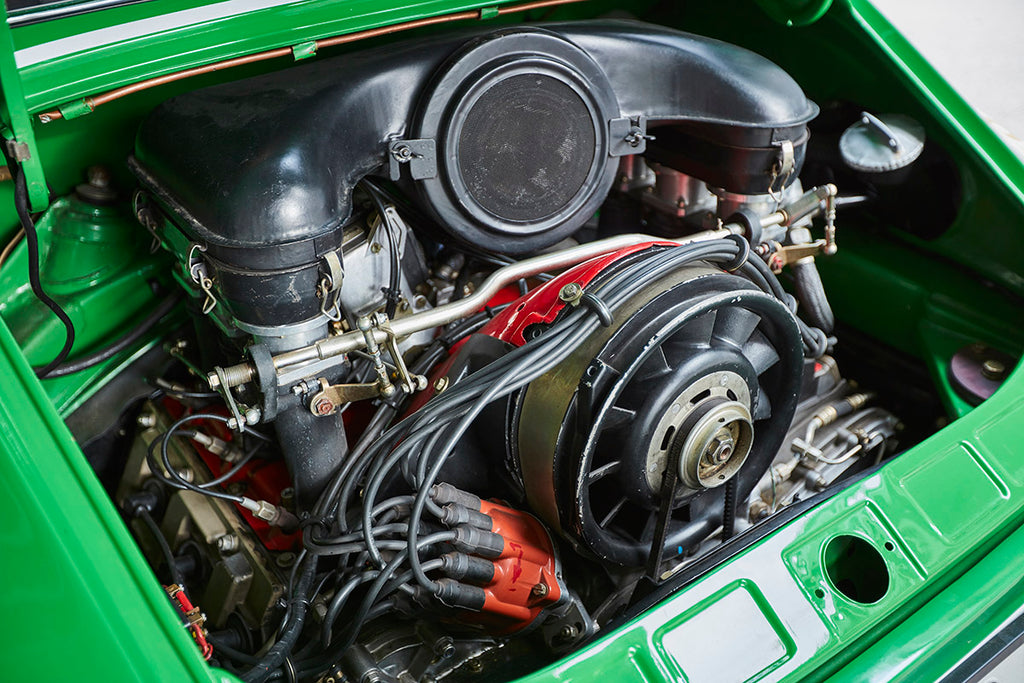
I turn the key, and the flat six immediately starts with a rough, off-beat rumble, while the sound, unsurprisingly, pierces the confines of the cabin to a greater extent than in the corresponding 911 road cars of the time. I blip the throttle, and the engine responds promptly and crisply.
As I pull away a few unexpected noises emanate from the car. This is to be expected, as the car has been extensively raced over the course of its life. What’s more, the rear limited slip differential (with an 80% slip factor) makes its presence felt (it is clearly not happy at slow speeds or in very tight turns).

We first need to drive through the small village of Les Diablerets and, although the local inhabitants in this area may be used to seeing some special Porsches, I notice that a few pedestrians take longer glances as they gradually realise this is no mundane, classic 911, but something unique.
On part throttle, the engine is not at all noisy, but as the mountain pass beckons, I shift the gear lever of the 915 five-speed gearbox towards me (from third gear into second) and squeeze the throttle with vigour.
The engine reacts immediately and catapults the car towards the first corner. The RSR admittedly doesn’t weigh much, yet I’m surprised at how quickly and strongly the engine pulls. Through the first couple of bends it is evident how perfectly the front of the car turns into a corner, partly owing to the wider track, tyres and a strut brace connecting the front suspension towers.

As with any 915 gearbox, you can’t rush through the gears, but if you blip the throttle before a gear change the drivetrain responds better and progress is smoother. This car’s brake pedal does require a fair amount of downward pressure, but once you are through the initial phase, the stoppers – sourced from Porsche’s 917 race car – do a good job of scrubbing off speed.
As I gain confidence in the car, I explore the upper echelons of the flat-six’s rev range. The engine eagerly picks up speed throughout its rev range, but after 4 000 rpm it really comes on song and then you can easily keep the throttle pinned all the way past 7 000 rpm.
The owner says his RSR will rev cleanly to 8 000 rpm (the same point at which the 2.8-litre delivers its peak power), but I change up before this rounded number, only to be surprised, after guiding the ‘lever into the next slot, by the sheer eagerness with which the engine continues to push from the rear. It is a rush to drive and, as expected, even more so than the very capable 2.7 RS.
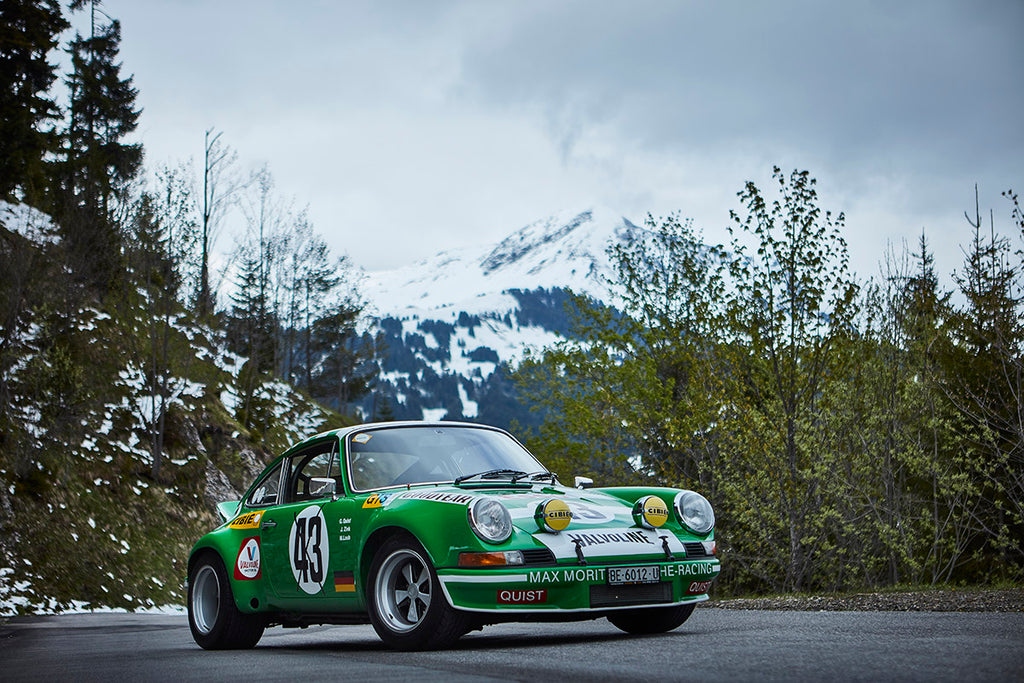
Dr. Thomas Gruber and Dr. Georg Konradsheim’s much praised book, Carrera RS, contains some fascinating pictures and information that detail the entire history and development of the 2.7 and 2.8 RS.
Did you know that the 2.8 RSR was built on the same production line as the 2.7 RS, but was then pulled off this line and taken to the customer sport department (in Werk 1) where the transmission, suspension and fire extinguisher, to name three, were fitted? The 5 cm wider arches at the front and rear were also welded at an early stage on the production line.
Once the building process was completed, the car would be transported to Weissach’s test circuit where the running-in process would take place.
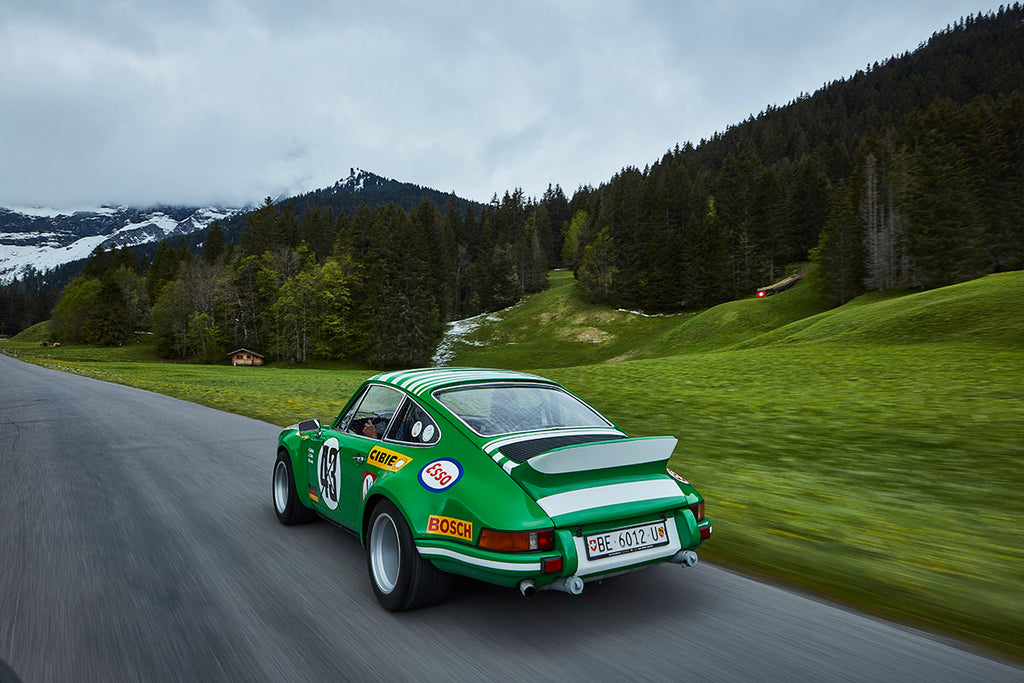
Only a few options were available; these included a 120-litre fuel cell, special gearing ratios and chromatic side scripts.
Could there be a better way to celebrate this monumental machine than having your RSR registered in what is surely one of the most picturesque countries in the world, and enjoy it on some of the best driving roads?
During a discussion with Lee Maxted-Page, he summed it perfectly: “They are simple and effective and combined with amazing sound and looks, they still provide a few lucky people with the ultimate early 911 driving experience”.
As only 49 2.8 RSR customer cars were built in 1973, it is no wonder these are rare cars. Needless to say, you will have to search extensively to get your hands on one of the most important early RS cars…
Specifications
1973 Porsche 2.8 RSR
Engine: 2.8-litre, flat six-cylinder, petrol
Power: 212 kW @ 8 000 rpm
Torque: 285 Nm @ 6 500 rpm
Transmission: 5-speed manual, rear-wheel drive
Weight: 982 kg
0-100 km/h: N/A
Top speed: 260 km/h (depending on gearing)

